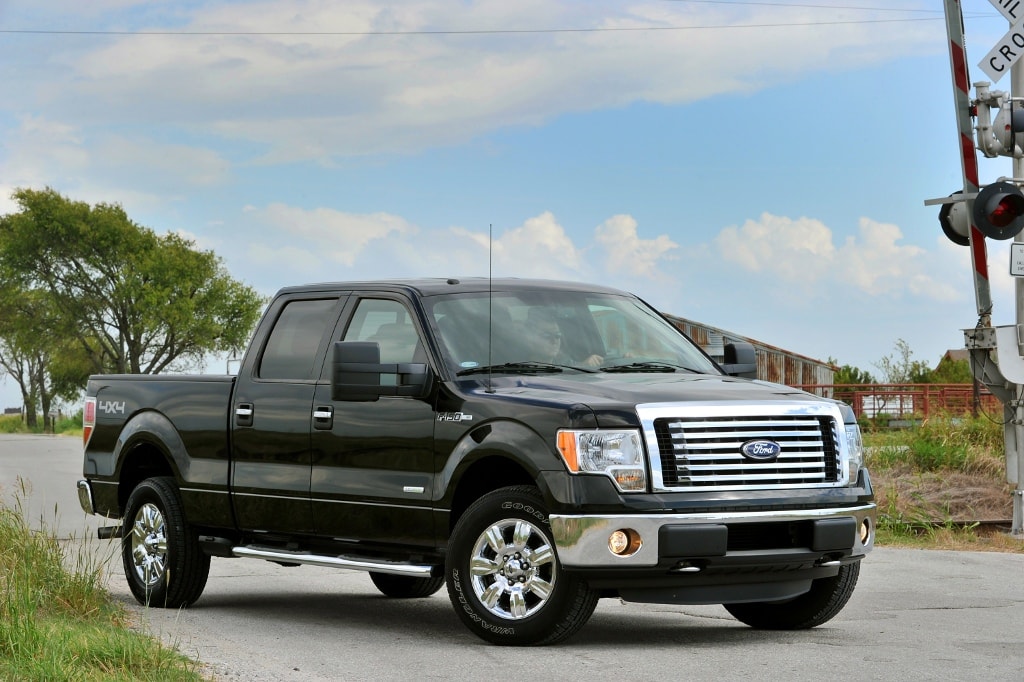American automaker Ford announced today it is currently pending final EPA certification for its all-new 3.7-liter V6 engine in the 2011 F-150. Aimed at becoming the most fuel-efficient full-size pickup, the unit is projected to deliver 23 mpg (10.22 l/100km) highway. Specifically, the new 3.7-liter V6 is projected to deliver 16 mpg (14.7 l/100km) city and 23 mpg (10.22 l/100km) highway in 4x2 configuration.
“The all-new engine lineup for the 2011 Ford F-150 is focused on delivering what matters most to truck customers – best-in-class power, capability, durability and fuel economy,” said Barb Samardzich, vice president of Powertrain Engineering. “Each engine offers an unequaled combination of these attributes.”
Built at the Cleveland Engine Plant, the 3.7-liter V6 engine has benefited from several enhancements in order to achieve these figures, including an optimized transmission, with fewer clutch plates compared with the other F-150 engines.
A one-way clutch, which allows for smoother 1-2 and 2-1 shifts, faster downshifts and improved fuel economy, has been added, while the gear ratios, span and shift schedule have been optimized for better an improved fuel economy. The double-overdrive gear also provides better fuel economy.
“Seventy percent of F-150 customers said better fuel economy is what they’d like improved most in their truck,” said Doug Scott, Truck Group marketing manager. “The 2011 Ford F-150 does exactly that with best-in-class fuel economy, best-in-class capability and power, and more powertrain choices to suit their different needs.”
Other 3.7-liter V6 key attributes include:
“The all-new engine lineup for the 2011 Ford F-150 is focused on delivering what matters most to truck customers – best-in-class power, capability, durability and fuel economy,” said Barb Samardzich, vice president of Powertrain Engineering. “Each engine offers an unequaled combination of these attributes.”
Built at the Cleveland Engine Plant, the 3.7-liter V6 engine has benefited from several enhancements in order to achieve these figures, including an optimized transmission, with fewer clutch plates compared with the other F-150 engines.
A one-way clutch, which allows for smoother 1-2 and 2-1 shifts, faster downshifts and improved fuel economy, has been added, while the gear ratios, span and shift schedule have been optimized for better an improved fuel economy. The double-overdrive gear also provides better fuel economy.
“Seventy percent of F-150 customers said better fuel economy is what they’d like improved most in their truck,” said Doug Scott, Truck Group marketing manager. “The 2011 Ford F-150 does exactly that with best-in-class fuel economy, best-in-class capability and power, and more powertrain choices to suit their different needs.”
Other 3.7-liter V6 key attributes include:
- Best-in-class 302 horsepower at 6,500 rpm
- Unsurpassed 278 lb.-ft. (377 Nm) of torque at 4,000 rpm
- Best-in-class 6,100 pounds (2,767 kg)maximum trailer tow
- Ti-VCT (twin independent variable camshaft timing) creates precise, variable timing control of both the intake and exhaust camshafts to optimize power, performance and fuel economy
- E85 flex fuel capability
- Piston-cooling jets, which squirt oil on the underside of the pistons to keep the piston crowns cool under extreme operating conditions
- Forged-steel crankshaft for improved durability
